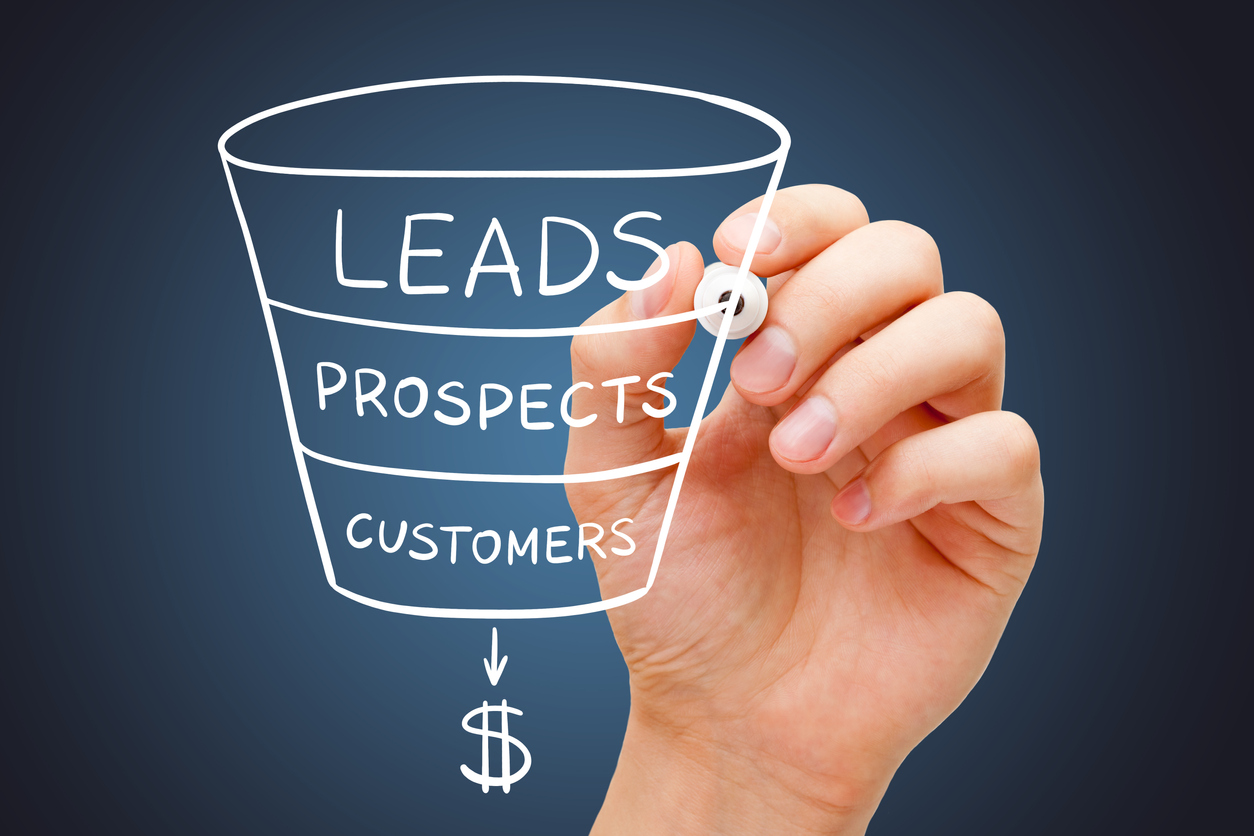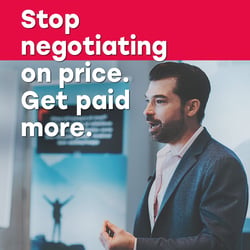The Evolution of Lead Qualification and How to Improve Your Tactics
Lead qualification is a recent but overwhelming trend in business web development. In the last two years alone, we have seen a massive explosion in ways that websites are using to connect with visitors and determine if they are potential customers. But like all new trends and marketing tools, the process hasn't been perfect from the start. We have all seen a number of clumsy, clunky, and well-meaning-but-annoying lead qualification techniques used all over the internet, and over time, the methods have undeniably improved. For anyone paying attention, the evolution of lead qualification is abundantly and amusingly clear. Smart business owners have learned a lot in the last few years in terms of identifying who is interested, why non-leads are important, and how to turn every visitor into a valuable point of interest.
The Early Days: "Everybody Should Be My Lead!"
Gathering leads hearken back to the origins of selling. Long before the internet, there were salesmen like those depicted in the iconic Mamet play Glengarry Glen Ross with the slogan "Always Be Closing". This aggressive outbound style of selling has since faded in favor of inbound marketing tactics, but the attitude lingered:
"What if we simply push every website visitor and member to become part of the mailing list and into the conversion funnel? Surely more of them will convert!"
Marketers said to themselves and we saw an era of automatic mailing list sign-ups and very pushy pop-ups insisting that all visitors become committed leads. As it turned out, inbound marketing era consumers hate that. Unsubscribe became the favorite email button and pushy websites began to drop in popularity.
The Rise of Lead Qualification: "Are You My Lead?"
Fortunately, business owners and marketers are a resilient bunch and specialize in learning from mistakes and mistargeted lead gathering techniques. When it became evident that simply forcing visitors to become leads could potentially lose more business than it generated, it was time to try something new. Instead of assuming all website visitors were leads, it was accepted that some of them were "just browsing" or would need more time to make up their minds. Some even like your articles but aren't in the right position to actually buy your products, whether that limitation is geographical, financial, or logistical.
So we began asking visitors if they were leads and asking questions that could identify people as leads. This coincided with the rise of chatbots who could ask questions and the configuration of the pop-ups changed. Instead of insisting that visitors join the mailing list, we asked more politely. "Can we help you today?" or "Would you like to join our mailing list?" or "Would you like a consultation on the right services for you?". A simple Yes from customers was all it took to open up the conversion funnel.
This resulted in a lot more happy conversions, but what about the people who say No? Is there a way to salvage some value from these visitors?
An Attempt at Humor-Shaming: "Non-Leads are Totally Lame"
Then a new idea joined the shared marketing mind. What if you used the idea of the CTA to subtly pressure visitors to become leads by suggesting that leads are cooler than non-leads. "We'll use humor!" thought the marketers. Inbound consumers will love that because we're hip and cool, and more of them will want to be our leads.
In theory, this was a good idea. In practice, only a few marketers and business owners were successfully funny enough to get the desired results. The problem is the use of "negging", the idea of using insults to convince someone to do what you want. We began to see popups that had two options to answer a simple lead qualifying answer. One was funny, and the other was downright insulting:
"Sign me up! I want to know more!"
and
"No thanks, I hate learning new things."
This approach essentially forces non-leads to insult themselves in order to get away from the pop-up and after that, enjoyment of your content is entirely soured. In fact, they may never come back again. It's sad to say, but as the next to most recent evolution, this tactic is still widely used by not-funny marketers who think they're getting a laugh.
The Savvy Approach: "If You're Not a Lead, Can We Still Help You?"
One thing that almost every evolution of lead qualification has missed is the value of non-leads. Just because someone can't or isn't going to buy your product or sign up for your service doesn't mean their good opinion is useless. What are all your followers on social media if not a group of both leads and interested non-leads creating social value?
While it took most businesses years to realize this, the latest evolution of lead qualifying has finally begun showing consideration, respect, and even interest in people who 'fail' to be qualified as convertible leads. But their good opinion, recommendations to friends, and even future potential to become a customer should not be forgotten. The usual two-question qualification evolved again. Now, instead of ignoring, disregarding, or insulting non-leads, websites have begun to reach out.
This has been notably assisted by the use of chatbot support staff who can ask more than one friendly question in quick succession. First, the chatbot (or pop-up in some cases) will ask if the visitor is a lead. If the visitor says 'no', either because they're still deciding or just browsing, the UI politely asks offers to be of service if the visitor needs anything. Just like good service in a brick-and-mortar venue.
The Survey Evolution: "Why are you here today?"
Finally, business thought leaders have just started to introduce yet another evolution to the lead qualification process. Where before, it was all 'yes or no' answers to whether or not a lead was interested, marketers realized that they actually want to know why a visitor may or may not be interested. And if they're not a lead, what value they get from the website.
This is the survey evolution. Growing businesses are constantly striving to turn more of their casual e-commerce browsers and blog readers into customers, but it occurs to very few of them to actually ask the online visitors how to do this. Especially considering that you already ask a single lead qualifying question to every viewer.
Here's the key: You don't have to have just two answers, "Yes" and "No". You can learn a lot from giving your visitors the opportunity to share not just their lead qualification, but their actual interest in your site. Consider this configuration instead of the traditional simple qualification. Even one or two additional options can provide a great deal of information.
"Thanks for stopping by! Today is your lucky day, by signing up for our newsletter, you can get 20% off your first purchase. Would you like to join our members' club?"
-"Yes, sign me up!"
-"Not Sure Yet. Ask me again when I finish this article"
-"No thanks, I'm just browsing"
-"Not right now, but I may be back later"
-"Sorry, I'm looking on behalf of someone else"
-"No thanks, I'm just here for your awesome articles"
While you may not want to include every option, adding just one or two additional responses for leads or non-leads to give can offer amazing insight into why your leads convert and why visitors who stop by don't become leads. This information is infinitely more valuable than a simple binary question of lead or non-lead.
When deciding on your own website's lead qualification tactics, think carefully about what you really want to be asking your visitors and the value of the information they send back. Not to mention the message your qualification assets are sending to both leads and non-leads. With the right attitude, strategy, and a few snazzy internet UI features, you can be learning much more from your lead qualification and make every website visitor feel more welcome. For more thought leadership and business growth tactics visit the Bold CEO Business Growth Insider for more in-depth resources.
If you're a business owner, CEO, or entrepreneur running a 6-7 figure business looking to scale to 8 figures and beyond then watch this webinar: How Discovering The Wedge Strategy Scaled My Business to 8 Figures and learn more about our upcoming Deal Flow Accelerator program.
You May Also Like
These Related Articles

5 Things Most People Don't Tell You About Growing Your Business

7 Reasons Why Leads Fall Out of Your Sales Pipeline




